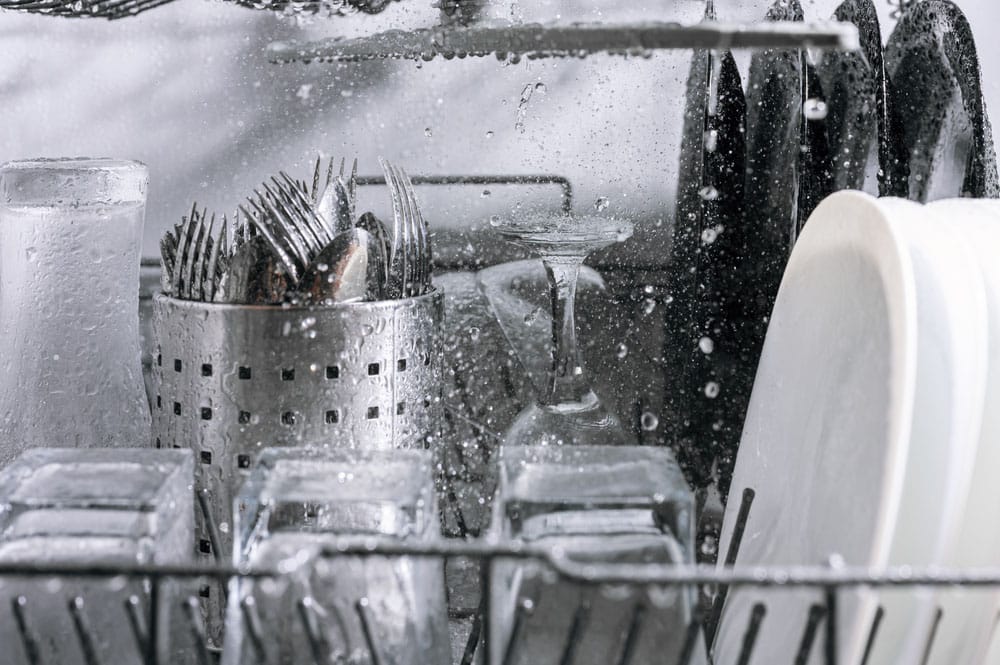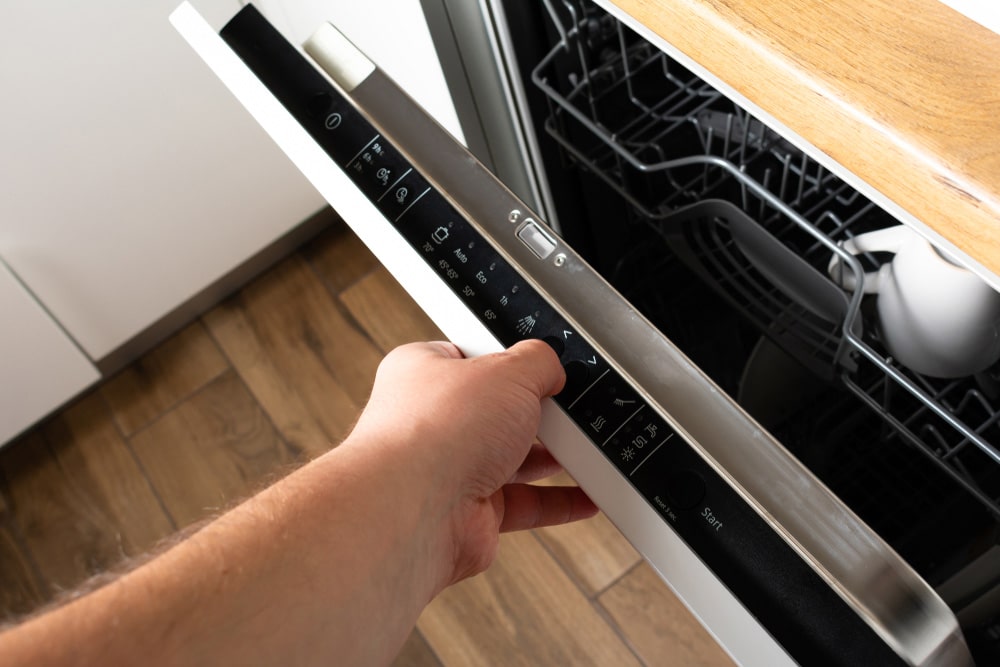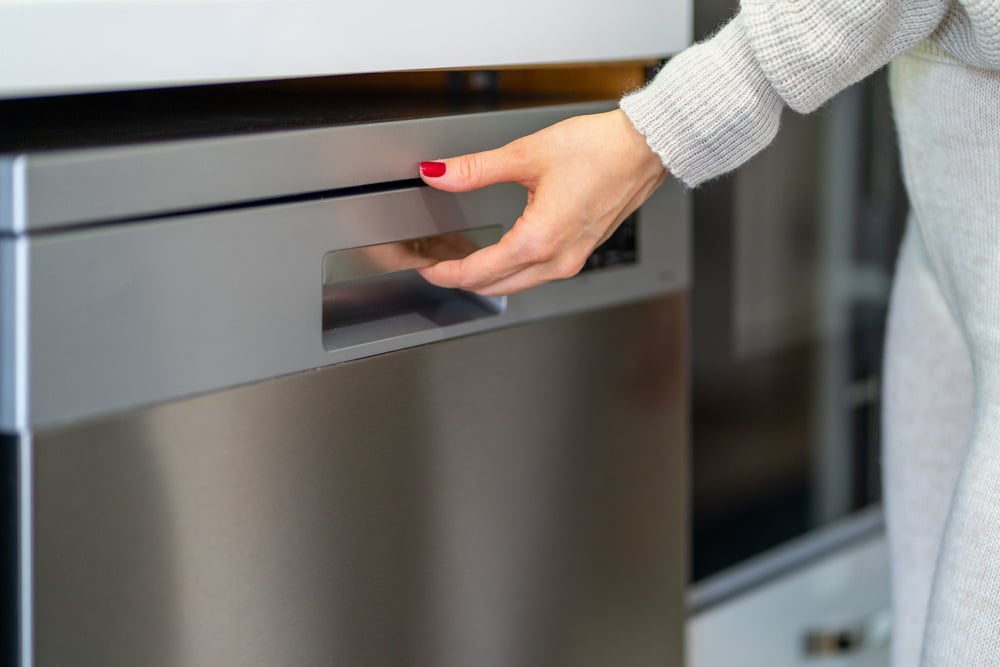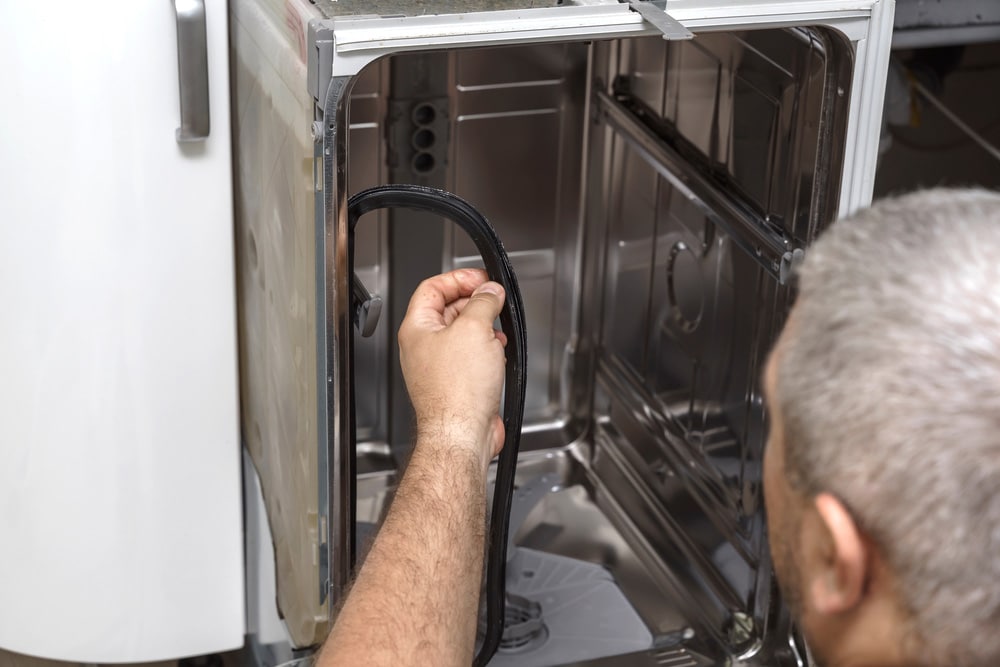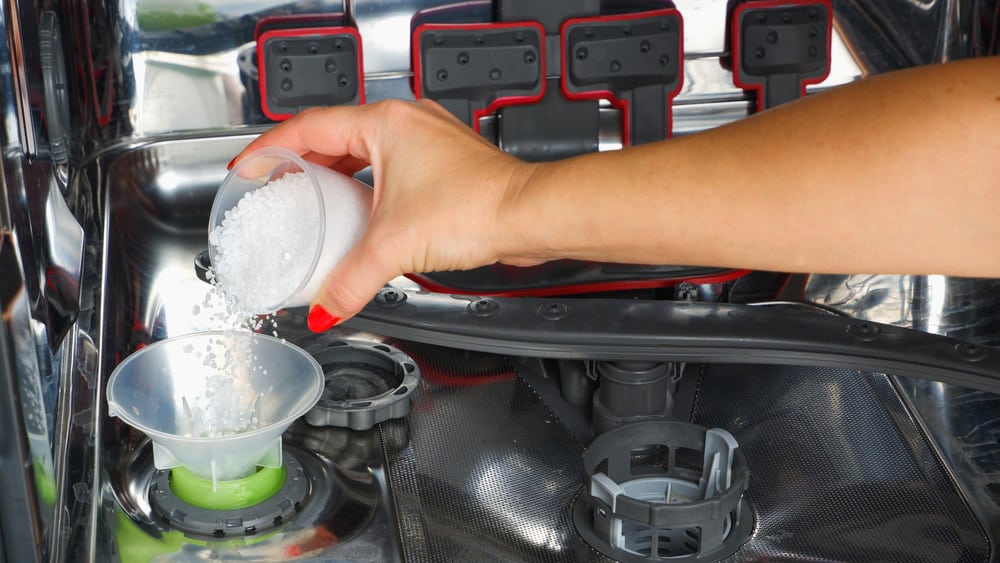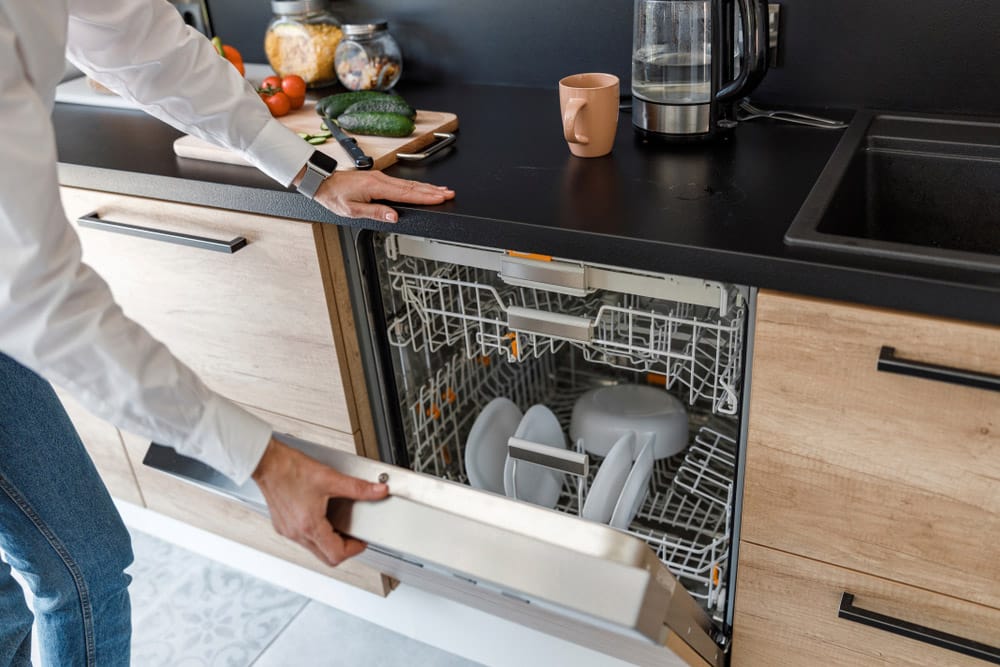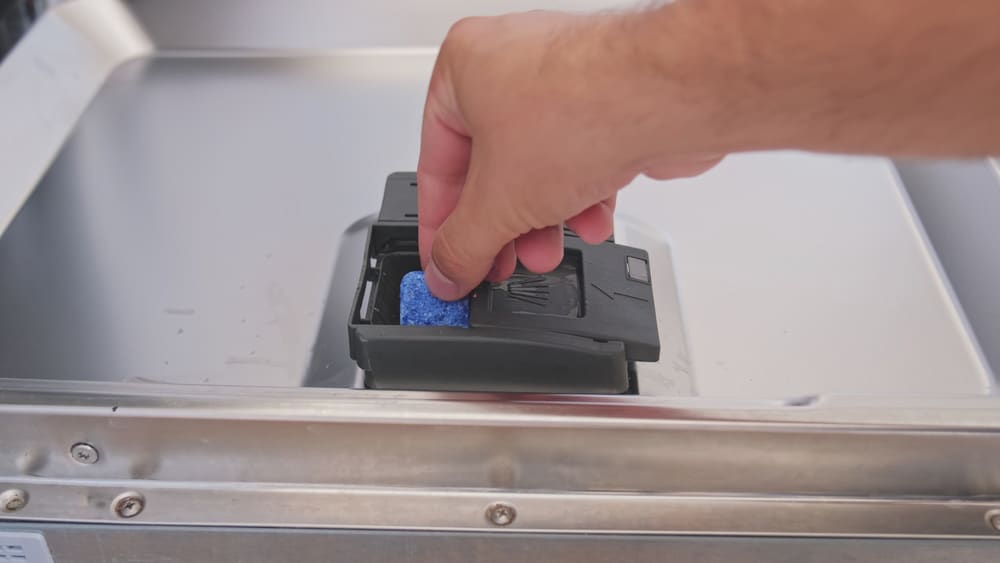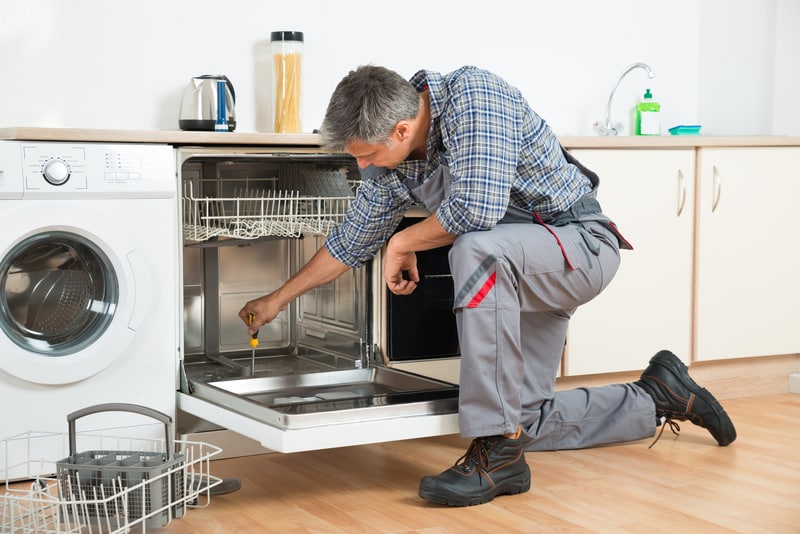
Modern dishwashers have made our lives a lot easier. They have automated the process of dishwashing. All you need do is pop the dishes in and the dishwasher washes, soaps, and rinses them for you. They are completely dry when you take them out.
You only have to wipe them and stack them on the shelf or the dish rack. In this way, your dishwasher provides convenience and eases your daily chores. Dishwashers have dispensers which allow you to automatically dispense soap, which is added to the water for cleaning the dishes.
The amount of soap is set automatically so that you have the correct amount to wash your dishes. However, at times you may come across problems. Soap at the bottom of your dishwasher is one such problem, and has several causes. We’ll discuss this further in the article.
Why Is There Soap in the Bottom of My Dishwasher?
- Clogging in the Drain hose
The first reason you may encounter soap residue at the bottom of your dishwasher is due to clogging of the drain hose. If it’s clogged, the water will be drained more slowly, and soap will be left behind.
That’s why you need to ensure that you check the drain hose and clear it where possible. It could become clogged with fat or food particles.
For this reason, it’s best to remove food from plates before stacking in the dishwasher. Furthermore, rinse with vinegar in an empty dishwasher every now and then.
- Reduced Water Intake
You also need to check on the intake valve. It needs to be functioning perfectly so that you have ample water inside the dishwasher. Soap stuck at the bottom of the dishwasher is a clear sign of reduced water intake.
That is why you will need to ensure that you check on the water intake and make sure it works, so that you have an ample amount of water inside the dishwasher.
Sufficient water inside the dishwasher will wash away all the soap that is being dispensed, and result in the dishwasher functioning efficiently.
- Hard Water
Hard water is also a common reason for soap remaining in the bottom of your dishwasher. Hard water doesn’t dissolve soap effectively. A solution is to either change the water source to a softer supply, or use water softeners in the water.
Once the water is softer, your problem should be solved. Softer water will be mix well with the soap, and get the job of cleaning done instead of being stuck at the bottom.
- The Water isn’t Hot Enough
In order for the soap to dissolve in the water, the water needs to be at least 140 – 160 degrees F. If your dishwasher doesn’t come equipped with thermostat or other temperature monitor, you’ll have to check it manually. If it’s not hot enough, call your repairman.
- Dispenser Door Blocked or Jammed
Another reason for the soap not dissolving is if the soap dispenser door is blocked or jammed. This will result in the soap tablet not dropping into the hot water, and your dishes being washed without soap.
This may be as simple as your dishrack not being stacked correctly, where the dispenser door is blocked from opening properly. The solution is very simple: ensure nothing blocks the dispenser and prevents it from opening when you’re stacking your dishwasher.
Keep large or long objects stacked at the back, where they won’t fall and block the dispenser. You may also have soap build-up in older or more poorly designed dishwasher. The reason for this is that the water that is sprayed inside the dispenser isn’t sufficient to wash the soap out.
The soap accumulates on the hinges or in the latch mechanism, causing the dispenser to fail to close correctly. This will cause the entire wash to fail. So, you need to clean the dispenser with hot water and soap every now and then.
- Broken Latch
Unfortunately, the latch of the dispenser sometimes breaks, resulting in the door failing to close. It may be that it has simply become worn, or that an aggregation of soap has worn the latch away.
Whatever the cause, the soap falls out at the wrong time, and you get soap at the bottom of the dishwasher.
- Broken Latch Spring
When the dishwasher operates correctly, a timer sets off a spring, which operates the door of the soap compartment, and causes it to open. If the spring is open, then door doesn’t open, and the soap is not dispensed to the water. Your dishes remain dirty.
You’ll find a lot of grim on both the dispenser door and the dishes. And you may find the dispenser door difficult to open without the spring mechanism.
- Warped Dispenser Door
Unfortunately, the door can sometimes warp during a wash cycle. This only occurs in older models. It happens when the water is too hot or the dry cycle is too hot. You would have to replace the part entirely, as nothing can be done to fix this.
- Worn Out Dispenser Gasket
The gasket is the rubber ring on the inside of the dispenser door. It ensures that the soap remains sealed until it’s needed by sealing the dispenser off from the rest of the dishwasher. It means that your soap will only be dispensed exactly when needed.
And it’ll help make sure that the dispenser door closes correctly. Gaskets often need replacing. If it’s just a bit worn you can simply apply Vaseline petroleum jelly. This will soften it and reinitiate the seal.
However, if there are holes in it, it’s best to call your dishwasher repairman t replace it entirely.
- Circulation Pump Failure
Another reason for soap residue is that your circulation pump may have failed. It may have seized or be jammed by an object. When the circulation pump works well, it sprays water in the dishwasher, and washes the soap from the dispenser.
If you hear an odd noise coming from your dishwasher once you’ve started it, open it to determine if there’s any water circulating in the washer. If there’s very little, then it’s most likely your circulation pump. Once again, call a repairman to fix the problem.
- The Spray Arm is Clogged
In the spray arm you have a number of small holes. They all need to be clear in order for the water to reach the dishes. So, if you don’t have enough water in your dishwasher, check the spray arm holes.
If they’re clogged with anything, such as scale from hard water, you’ll need to clean each hole. Just make sure to follow the manufacturer’s instructions, or you could land up with a worse problem on your hands.
- Too Much Soap
If you find that you have residual soap in the bottom of your dishwasher after a wash, it may be that you’ve used too much soap. If you use tablets, it shouldn’t be a problem. However, if you use powder and the washing cycle is very short, you could land up with excess soap for the amount of water.
- Spray Arm Broken
If the spray arm is broken and isn’t able to spin, you will have trouble with your dishwasher and residual soap. You will only find this out if you call a professional repairman.
Overall, it’s best to call a repairman to find out what’s wrong, because you don’t have the tools to fix it. Neither do you have the expertise or ability to diagnose the problem.
- Wax Motor not Working
A further issue could be the wax motor. This is supposed to trigger the opening of the dispenser door, and operates with a timer.
If this isn’t functioning correctly, the dispenser door may not open at all, resulting in the soap not being dispensed. Hot water alone doesn’t clean the dishes, unfortunately, so you’ll find you come out with hot but dirty dishes.
- Loose Rinse Aid Cap
Some machines come equipped with a rinse aid cap. If this is loose, you can’t actually run a cycle. You have to tighten it first in order for the washer to work.
If it doesn’t screw tight, take it off completely, and check for residue in the cap. If there is, it’s a simple matter to clean it with hot water and a cloth.
Conclusion
Dishwashers are exceptionally helpful appliances to have in the home. However, when they become faulty, it can be hard to work out why. After a couple of simple tests, it would be best to call a professional repairman.
Firstly, they know how the machines work, and what tends to go wrong. They have all the equipment to test for faults, and they know how to do it without breaking the washer. What’s more, it saves you the headache of trying to fix it yourself.
They also know where to obtain good quality spare parts, and which model dishwasher takes which spares. So, all in all, just call a repairman.
